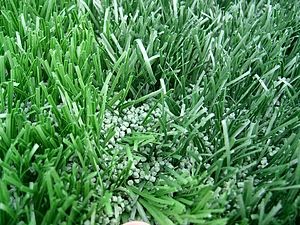Synthetic turf first gained substantial attention in the Nineteen Sixties, when it was used within the newly constructed Astrodome. The specific product used was developed by Monsanto and called AstroTurf; this time period since then grew to become a colloquialism for any artificial turf all through the late twentieth century. AstroTurf stays a registered trademark, however is no longer owned by Monsanto. The first generation turf programs (i.e., quick-pile fibers without infill) of the 1960s has been largely replaced by the second technology and third generation turf systems. Second generation artificial turf programs featured sand infills, and third era techniques, that are most generally used in the present day, provide infills which might be mixtures of sand and recycled rubber.
Historical past
David Chaney - who moved to Raleigh, North Carolina, in 1960 and later served as Dean of the North Carolina State College College of Textiles - headed the staff of Analysis Triangle Park researchers who created the first notable synthetic turf. That accomplishment led Sports Illustrated to declare Chaney as the man "accountable for indoor major league baseball and thousands and thousands of welcome mats." Artificial turf first came to prominence in 1966, when AstroTurf was put in in the Astrodome in Houston, Texas. The state-of-the-art indoor stadium had attempted to use pure grass throughout its initial season in 1965, but this failed miserably and the field conditions were grossly inadequate throughout the second half of the season, with the dead grass painted green. Attributable to a limited provide of the brand new artificial grass, solely the infield was installed before the Houston Astros' residence opener in April 1966, the outfield was installed in early summer time throughout an extended Astros highway journey and first used after the All-Star Break in July. The usage of AstroTurf and similar surfaces grew to become widespread within the U.S. and Canada within the early Nineteen Seventies, installed in both indoor and outside stadiums used for baseball and football. Maintaining a grass taking part in surface indoors, whereas technically doable, is prohibitively expensive. Teams who chose to play on artificial surfaces outdoors did so due to the lowered upkeep value, especially in colder climates with urban multi-purpose "cookie cutter" stadiums corresponding to Cincinnati's Riverfront Stadium, Pittsburgh's Three Rivers Stadium and Philadelphia's Veterans Stadium.


No comments:
Post a Comment